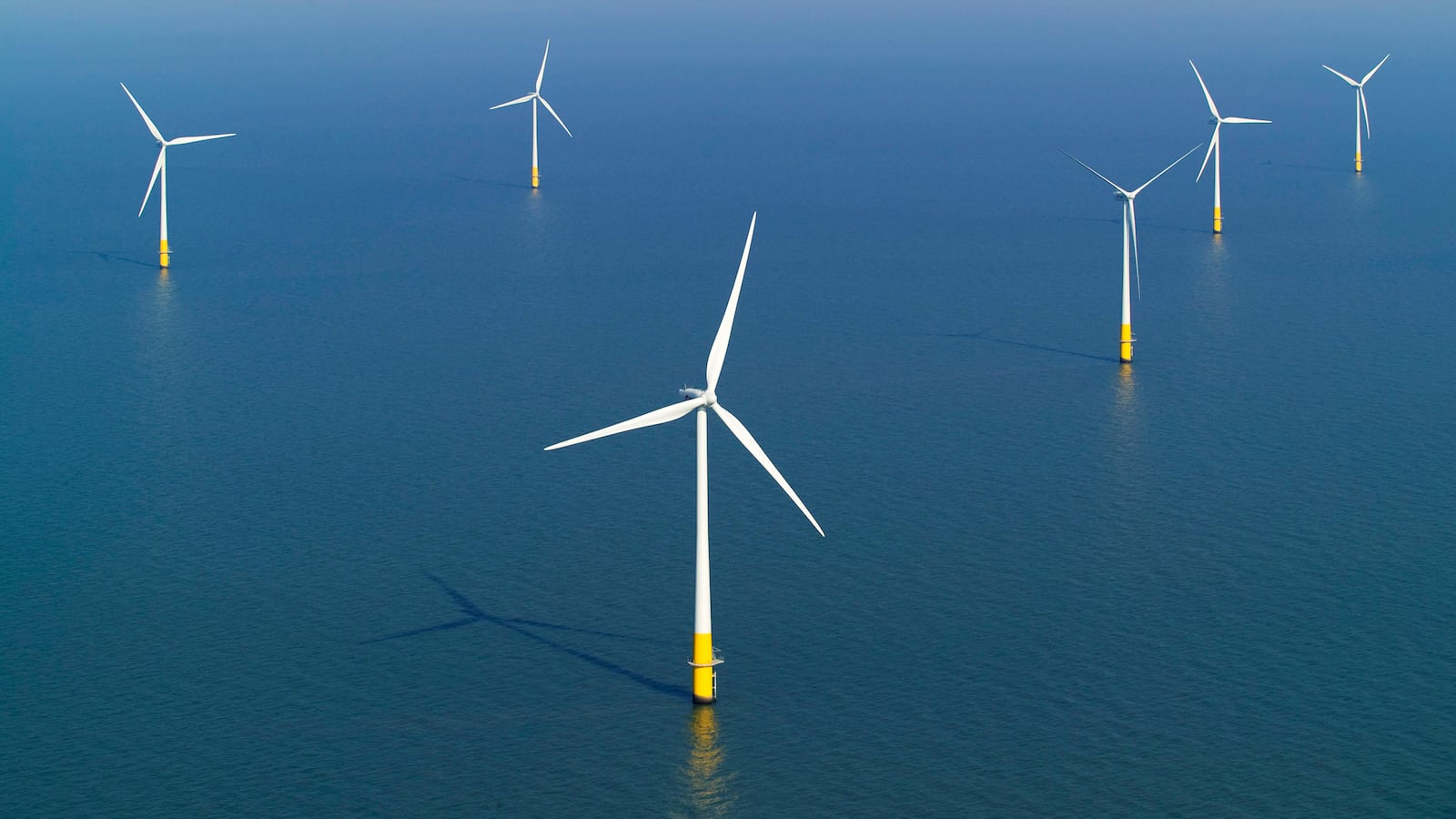After a large offshore wind power project received federal approval in Massachusetts, the governor offered a grand pronouncement: “America needs offshore wind power. With this project Massachusetts will lead the nation.”
Only that wasn’t Governor Charlie Baker just last month, that was former Governor Deval Patrick more than 11 years ago. And it wasn’t about the new Vineyard Wind project, which recently received its final federal approval, it was about Cape Wind, the supposedly first-in-nation wind farm that received its own approval in 2010. Patrick’s optimism was misplaced: Around five years and zero construction progress later, Cape Wind succumbed to heated opposition from certain political corners and special interest groups.
Observers of the still-nascent offshore wind industry in the U.S. might be forgiven for experiencing a bit of déjà vu in May, when Vineyard Wind received its approval, known as a Record of Decision. “Today’s Record of Decision is not about the start of a single project, but the launch of a new industry,” said the project’s CEO Lars Pederesen, echoing the grand statements made more than a decade earlier. Governor Baker added, “Massachusetts should be proud that this decision launches the nation’s first commercial-scale offshore wind project on the Commonwealth’s shores.”
While other parts of the world have managed to install thousands of offshore wind turbines over the last two decades, the U.S. has struggled mightily. To date, there are only seven turbines spinning, five at a small Rhode Island installation and two more in a pilot project off the coast of Virginia. But the Biden administration quickly made jumpstarting the offshore wind industry a priority as part of the effort to rapidly cut climate change-causing emissions. But in an industry that has celebrated several “launches” before, can the new momentum be trusted?
“I do think the offshore industry is in good shape to take off,” said Erin Baker, a professor and associate dean at the University of Massachusetts Amherst and director of the Energy Transition Institute there. She said that the most impactful part of the Biden administration’s push so far has been to improve inter-agency coordination, allowing for much faster permitting and development of wind projects.
“This is a game-changer, and we have already seen the impact with the approval of Vineyard Wind,” Baker told The Daily Beast. While the Bureau of Ocean Energy Management, which is part of the Department of the Interior, issues the main approvals for constructing an offshore wind farm, the National Oceanographic and Atmospheric Administration (part of the Commerce Department), the Department of Defense, and others are also involved with environmental assessments and other parts of the process. Biden’s January executive order on “Tackling the Climate Crisis at Home and Abroad” explicitly called for such coordination between the relevant agencies.
Among the administration’s other moves was the announcement of a new Wind Energy Area off the coast of New York and New Jersey where development will be prioritized, and establishing a target of 30 gigawatts of offshore wind power installed by 2030, which they say is enough to power 10 million homes. For comparison, all of Europe—which has been building big offshore farms for more than two decades now—has 25 installed gigawatts across 12 countries. China has about 10 gigawatts, and has led the world in new installations three years running.
“My general take is one of optimism,” said Sanya Carly, an Indiana University professor who researches energy policy and energy transition issues. “The U.S. has been poised to have a breakthrough in offshore wind for a long time now, and the Biden administration’s efforts to support the offshore wind industry might finally be enough to trigger that breakthrough.”
Along with Vineyard Wind, which hopes that its 62 enormous turbines will begin delivering power by 2023, a number of other large projects are now angling toward approval. The Biden team specifically noted the advancing process for Ocean Wind, a massive 1,100-megawatt farm to be sited off the coast of New Jersey, while other big projects hope to be up and running by mid-decade from Massachusetts down to Virginia.
“As projects get approved there will be great momentum for the industry,” Baker said. “They will be able to take advantage of ‘learning by doing’—learning more about the U.S. environment, including the physical [ocean] environment, the ecology, and the supply chain, and so on.”
She added that the cost of offshore wind has been falling extremely fast, along with increasing momentum for climate policy, “both of which make offshore wind more competitive economically.” Last year, the International Renewable Energy Agency said that the cost of offshore wind fell by 29 percent from 2010 to 2019—not quite as big a drop as solar power or onshore wind, but a massive improvement nonetheless.
Still, it is not hard to find headlines from 2010—and every year since—claiming that this, finally, is the year offshore wind takes off in the U.S. And as Carley pointed out, support from the White House isn’t all that’s required.
“I am inclined to claim tempered optimism, since offshore wind development is only partly driven by the federal government, and just as much driven by local rules and regulations, and local activism and acceptance,” she said. There is a chance that developers have learned some lessons from previous failures: Cape Wind’s doomed turbines were slated for as close as four miles from shore, causing some of the ruin-the-view uproar from the rich of Cape Cod (including the Kennedy family) that helped undermine the project, while Vineyard Wind will be about 12 miles from the coastline. A small difference maybe, but avoiding entrenched local opposition is obviously an important step to getting the industry off the ground.
“This groundbreaking project will produce affordable, renewable energy, create jobs and prove Massachusetts developed a successful model for developing offshore wind energy,” the current governor said, in what may as well be an echo of his predecessor a decade before. It seems the odds are in favor of such a statement finally being right.






